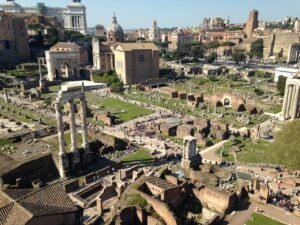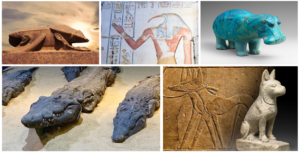Ancient Egyptian bones serve as test tubes that reveal much about them: their size, age at death, skeletal injuries sustained over time, and even royal connections can all provide clues.
Petrie’s Naqada findings caused considerable excitement among craniologists (Petrie 1900). His el-Dab’a finds further complicated some theories concerning race.
You may also like: Sacred Creatures of Ancient Egypt – Veneration of Animals
Skulls
Cranial bones are one of the key identifiers of human anatomy. Responsible for facial proportions and providing a direct indication of body shape and size, this unique bone provides one measure of the human body.
The skull plays an integral part in determining stature. In the past, this estimation process relied heavily on linear regression equations, which relied on body measurements from arms, legs, and torso. Recently, however, statistical research has utilized cranium-based regression models with more accurate results.
Therefore, cranium measurements can provide an acceptable degree of accuracy in predicting stature; however, results remain somewhat variable and should not be used as a means of distinguishing Egyptians and non-Egyptians due to differences between ethnic groups in skeletal proportions.
Bones
The anatomical method involves taking measurements of all the skeletal elements that influence stature. While this approach is accurate and time-consuming, sex-specific regression equations provide more reliable mathematical estimates of life height.
But this does not consider body proportions and the fact that stature depends on different proportions for limb length across populations, making comparisons essential. Therefore, it is crucial to compare formulae against closely related populations for accuracy.
At the turn of the twentieth century, Petrie integrated his archaeological work with many different disciplines – statistics and anthropometry among them – such as statistics. He even used graphs showing skull capacity to demonstrate the efficacy and utility of his new technique to other archaeologists (Fawcett 1902: 421).
Ernest Warren, assistant professor of Zoology at UCL, examined the skeletons at Naqada and compared their limb length ratios and those found among American Blacks. Warren concluded that those belonging to the “New Race” shared similarities with those belonging to Libyans; therefore, he classified them within that group.
Torso
The torso is the central portion of our bodies that encompasses the chest, abdomen, and pelvis. It plays an essential part in human physiology that influences all other aspects of physical well-being, such as head size and posture, upper limb length and function, and lower limb length and gait.
Anthropometric measurements of the human torso and other body parts have long been used to aid medical anthropology to ascertain proportions within the human body, dating back to ancient Greek science, art, and canons. Today, these same proportions continue to be employed both in facial anthropometry as well as for measuring and evaluating human anatomy.
Egypt was unparalleled in its ability to preserve not just skeletal remains but entire bodies for posterity through mummification techniques that went far beyond simple dehydration with natron and included full embalming that included taking out brain tissue and organs via cutting through the torso and opening up an anus at its endpoint.
Chest
Egyptologists working at Deir el-Bahari archaeological site recently made a surprising find at Deir el-Bahari: they found two chests bearing Thutmose II’s name from 3,500 years ago – potentially hinting at royal tombs that remain to be unearthed in this ancient Egyptian site.
Egyptians held chests as an essential component of their beliefs about the afterlife, viewing them as the “chests of life.” Nearly every surface in these chests would be decorated with prayers, spells, or images depicting gods and goddesses.
In the 17th dynasty, chests were decorated with images of Anubis, the Jackal God. Furthermore, this period introduced a unique decorating style combining shrine-shaped inner coffins and outer stone chests – also known as two-coffin tombs.
An inner coffin would house the viscera of the dead to ensure its soul would have a safe journey into the afterlife. To this end, each organ removed was assigned one of four guardians called The Four Sons of Horus: Imseti would watch over the liver; Hapy would keep watch on the lungs; Duamutef would oversee stomach contents; and Qebehsenuef would oversee innards.
Legs
Researchers conducted extensive analysis of Egyptian men’s and women’s legs. They determined that using the second and third metacarpals of both feet to assess stature accurately provided an efficient means to do so with less standard error estimates of less than 4.9 cm for males and 5.6 cm for females than previous regression equations, and this method has the potential to be applied across cultures.
Pharaohs were highly esteemed members of Egyptian society during their era. Yet, many pharaohs also engaged in consanguineous incest – marrying off their sisters or daughters into marriage arrangements that violated Egyptian laws against such behavior.
Ancient Egyptians believed that the heart was at the core of the human soul and mind, placing it into what is today known as a canopic jar and burying it alongside their bodies to carry their soul into the afterlife. Additionally, they drew figures depicting people with one leg forward to symbolize its power.
Arms
Arms have long been seen as symbols of power and strength. Long, muscular arms were popularly depicted in ancient Egyptian iconography to demonstrate gods’ omnipotence; similarly, arms play an integral part in sports such as boxing and wrestling as well as medicine (blood pressure monitoring and measuring blood flow in arteries).
The relationship between limb length and stature can be complex. Different populations often exhibit differing proportions between their limb length and stature ratios, so regression equations tailored to your target population should be utilized when conducting studies on either variable.
Shah5 and Alam7 have discovered a strong correlation between stature and arm span. This phenomenon occurs across gender groups. Their regression equations allow a more accurate stature estimation by measuring arm-span measurements instead of solely using height as the indicator. This method may prove especially useful in cases when people’s bodies have been severely injured and cannot accurately be measured using traditional height measures alone.
Hands
The human hand is a grasping organ composed of five digits when seen from its anatomical position (palm up). There are 27 bones in total: 8 are located in the carpals or wrist region, while 15 compose fingers and thumb digits – four having three phalanges each (proximal, intermediate, and distal), with only the thumb having two.
Hands are an integral part of human anatomy for various reasons. They play an essential part in personal identification, which is vitally important in forensic science, especially since criminal records often feature repeat offenders who may have adopted different identities to avoid detection.
A study involving 157 Egyptian subjects (82 males and 75 females) measured their statures as well as length and width measurements on their second and third metacarpal bones. Researchers discovered a strong correlation between hand anthropometric measurements and stature estimation; multiple regression equations were developed to estimate stature from hand dimensions regardless of gender or side of body orientation.
Feet
Feet is an amazing window into our pasts, though it may not provide as precise an analysis as facial analysis.
Scientists have recently discovered evidence of foot prosthetics on two ancient Egyptian mummies. One was likely designed as a replacement for the missing big toe of a woman aged between 50-60, likely who lived between 1950-20. Scientists are investigating if its wear may have helped the individual walk better in sandals – the footwear typical at that time.
In some cultures, the position of one’s feet can be taken as an indicator of religious devotion. For instance, in Egypt, the wife of a Pharaoh would wear her gold sandal on the opposite foot from that of her husband as part of a ceremony signifying their royal union and marriage vows. Samuel George Morton pointed out in his anthropometric studies that foot outlines reveal ethnic identities as well as signs that an individual might be about to change ethnicities.




